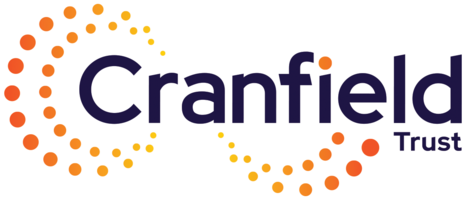This Trustees' Week we have drawn on insights from the diagnostics and development journeys of 657 organisations, using our Journey to Excellence (J2E) assessment tool, to see how charities have evolved where boards are excelling, and where challenges remain. This offers a rare, evidence-based view of how boards are leading, learning and improving.
The good news is clear. Trustees across the country continue to do extraordinary work. Hundreds of thousands of people give their time, energy and expertise to lead charities, providing thoughtful and determined leadership when organisations need it most. Through the Trust our clients are supported by our skilled volunteer consultants, who help boards strengthen their governance and leadership capacity every day.
Our aggregated data since the inception of J2E in 2020 shows many signs of strong and improving governance to date:
- Clarity of purpose: 86% of charities were clear about their purpose before working with Cranfield Trust, increasing to 94% after their project. In uncertain times, that clarity of purpose acts as an anchor, keeping boards focused on what matters most.
- Governance standards: 78% of boards followed an established governance standard such as the Charity Governance Code before their project, increasing to 83% afterwards. This highlights trustees’ determination to benchmark themselves against good practice, and with a new Code launching this week we’d hope to see that increase further.
- Board relationships: Just 20% of boards reported misalignment between trustees and their CEO before their project, reducing further to 14% afterwards. This suggests that most enjoy healthy, constructive working relationships, which are vital for effective governance.
- Equity, Diversity and Inclusion Policy: 81% of charities had an EDI policy before their project, increasing to 86% afterwards. This reflects a growing commitment to inclusive organisations and practice, even though there is still more to do to turn policy into daily practice.
Lower confidence, big opportunities: What can trustees do next?
While there is plenty to celebrate, our data also highlights areas that are proving more challenging, and some that have remained stubbornly static or even declined over the period.
1. Get the basics right: Finance and risk at the heart of good governance
Our data shows that about a third of the charities our volunteers support struggle with some of the core indicators of financial and risk management. Prior to our work around 25% of charities did not prepare annual budgets, a 32% did not use cash flow forecasting, an essential practice in challenging times. Some 40% stated they did not have an active risk register. Around 35% also reported not holding appropriate reserves for sustainability, a figure that has declined in recent years.
Boards have a shared responsibility to oversee their charity’s finances and risk management. It is not enough to rely on a treasurer or subcommittee. All trustees should have a grasp of financial information and key risks and opportunities. Creating a culture where scrutiny is welcome, and where financial information is clear, accessible and discussed openly, is key. Effective boards are engaged and curious, even where individual trustees are not finance experts. If a trustee does not understand the figures or sees that key financial information is missing they should ask. Confidence to ask, not ego, makes a board financially effective.
2. Plan for change: strengthening leadership succession
Only 34% of charities we worked with said they planned effectively for succession before working with Cranfield Trust, increasing to 48% afterwards. Succession planning is a core responsibility of any board, ensuring continuity in key roles especially the CEO and preventing instability when change occurs.
Although data on CEO turnover in the charity sector is limited, sector insights suggest that leadership tenure is shortening and pressures on senior leaders are increasing. Boards should hold open conversations about leadership futures, consider what would happen if the CEO left tomorrow, and build clarity about interim arrangements and future talent. Treating succession as part of ongoing organisational development, rather than a one-off exercise, helps ensure leadership continuity and protects the charity’s mission in uncertain times.
3. Live your values, don’t just list them
Around 79% of charities in our dataset said they had a recent organisational values statement, increasing to 85% after a Cranfield Trust project. However, the trend isn’t entirely positive over the period. In 2025 this dipped significantly, to 63% before projects and 77% afterwards.
Values matter deeply. They define a charity’s core principles, guide decisions, and build trust. In an era of polarising cultural dividing lines, this is truer today than ever. For boards, strong values can anchor an organisation and can guide through complex decisions and changing times, ensuring a charity stays true to its purpose.
If your values feel stale, revisit them. Make sure they are still relevant, understood and lived, not just written. As The Culture Code reminds us, meaningful values need to be discussed often, modelled by leaders, and woven into everyday practice. In an era where culture and values are rightly under public scrutiny, a board that keeps values alive will help their charity stay grounded and trusted
4. Build the right mix: Strengthening board skills and diversity
Boards continue to find it difficult to achieve the right mix of skills and diversity. Only 65% of charities said their board had the skills needed to be effective before projects, increasing to 73% afterwards. Regular skills audits help identify gaps and keep pace with change in your strategy and operating environments. Open recruitment is key but not the only answer to skills gaps; investing in trustee learning can strengthen capability too.
Diversity also remains an area for improvement, with 52% of boards considering themselves diverse before their project, rising to 59% afterwards. The right mix of diversity will look different for every charity, depending on its purpose and communities served. As the Charity Governance Code suggests what matters most is being thoughtful, transparent and intentional: reflect on who is missing, understand the barriers, take action, and show your workings along the way.
5. Lead the digital and AI agenda
Only 42% of charities said they had an IT strategy before working with Cranfield Trust, and this figure has barely shifted over the past five years. In a digital era, where charities are adopting new systems and exploring AI, boards have a vital role in shaping how technology supports their mission and day-to-day operations.
Technology decisions are strategic, not technical. They affect how services are delivered, how teams collaborate, and how data is used responsibly. For smaller organisations, digital investment can feel daunting, but tools like the Charity Digital Code can help guide decisions. Boards that engage with this agenda; asking how digital tools, data and AI can advance purpose are better placed to ensure technology works for their charity, rather than the other way round.




